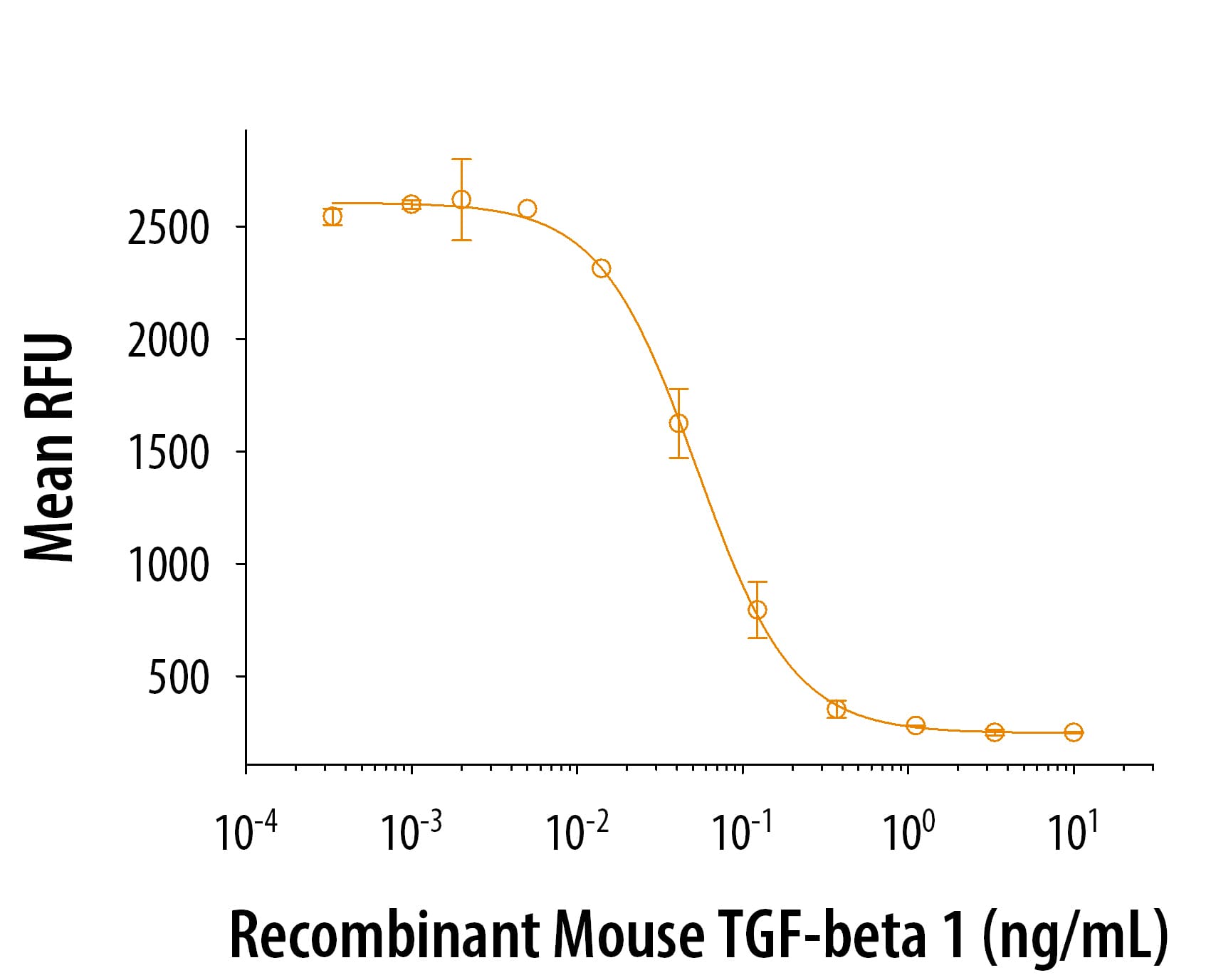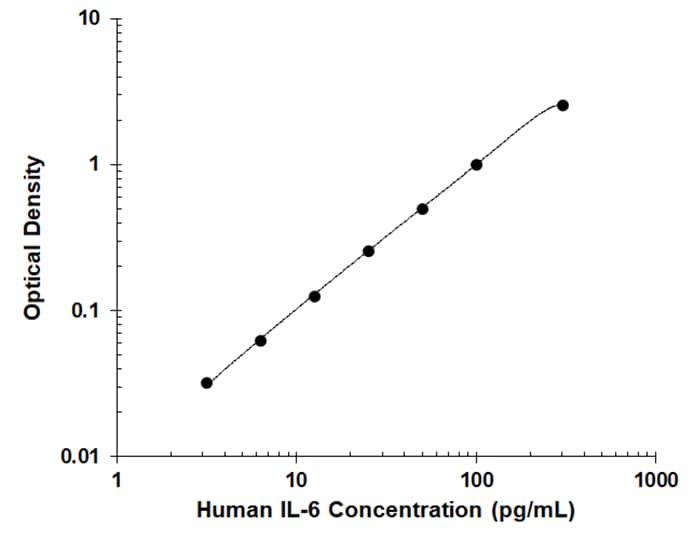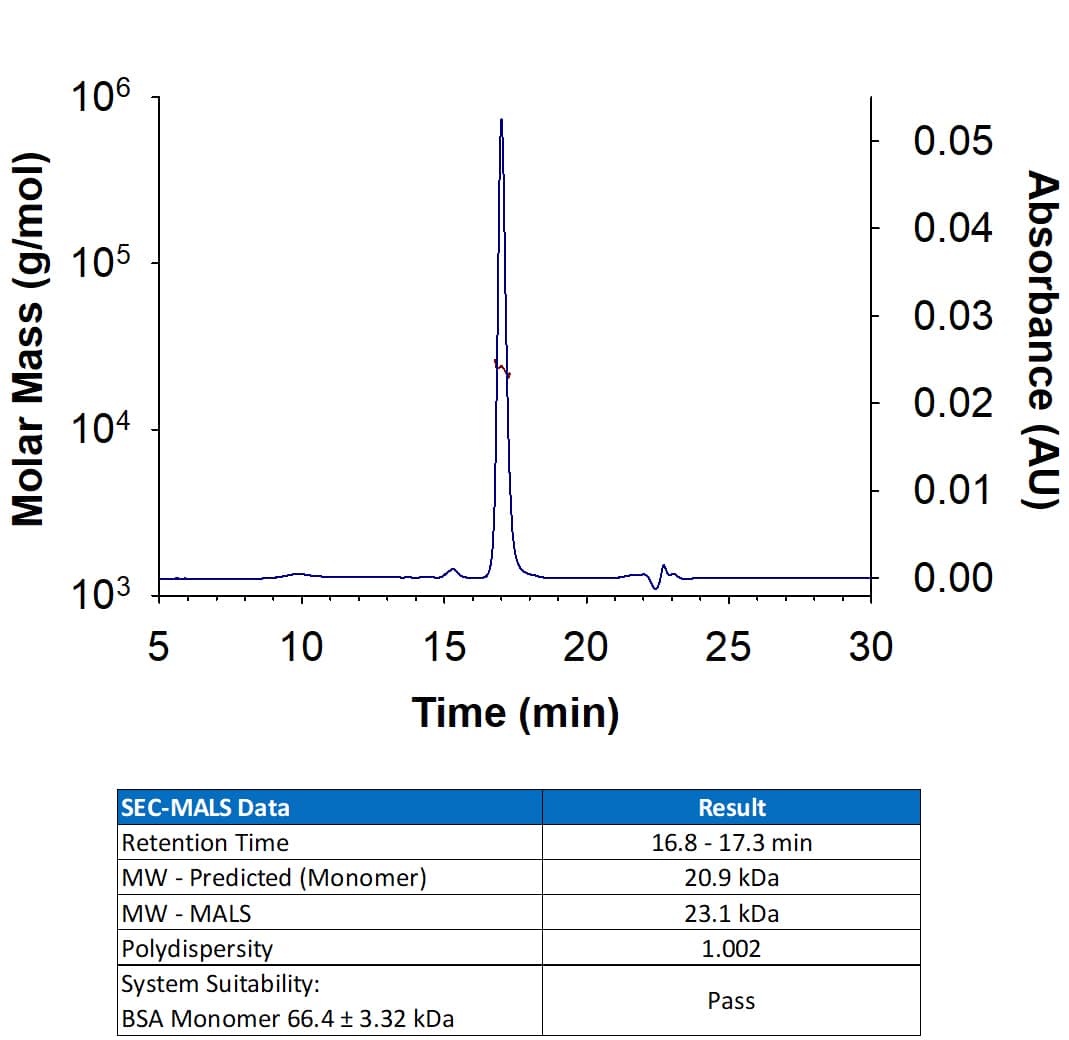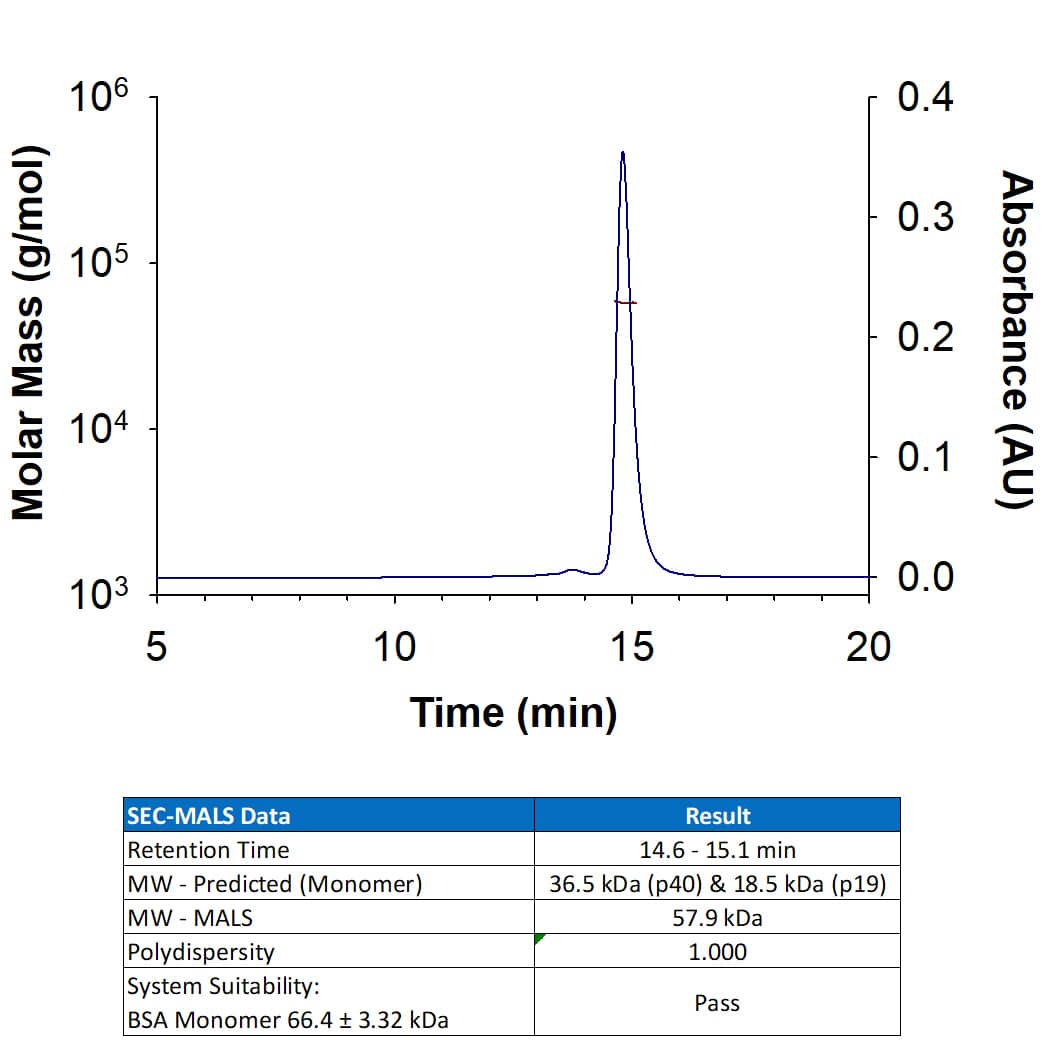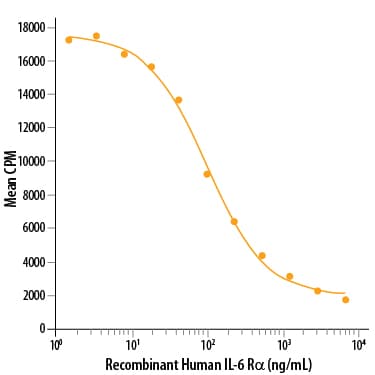Recombinant Human CD200 Fc Chimera Protein, CF Summary
Product Specifications
| Human CD200 (Gln31-Gly232) Accession # P41217 |
IEGRMD | Human IgG1 (Pro100-Lys330) |
| N-terminus | C-terminus | |
Analysis
Customers also Viewed
Product Datasheets
Carrier Free
CF stands for Carrier Free (CF). We typically add Bovine Serum Albumin (BSA) as a carrier protein to our recombinant proteins. Adding a carrier protein enhances protein stability, increases shelf-life, and allows the recombinant protein to be stored at a more dilute concentration. The carrier free version does not contain BSA.
In general, we advise purchasing the recombinant protein with BSA for use in cell or tissue culture, or as an ELISA standard. In contrast, the carrier free protein is recommended for applications, in which the presence of BSA could interfere.
2724-CD
| Formulation | Lyophilized from a 0.2 μm filtered solution in PBS. |
| Reconstitution | Reconstitute at 100 μg/mL in sterile PBS. |
| Shipping | The product is shipped at ambient temperature. Upon receipt, store it immediately at the temperature recommended below. |
| Stability & Storage: | Use a manual defrost freezer and avoid repeated freeze-thaw cycles.
|
Background: CD200
CD200, also known as OX-2, is a 45 kDa transmembrane immunoregulatory protein that belongs to the immunoglobulin superfamily (1, 2). The human CD200 cDNA encodes a 278 amino acid (aa) precursor that includes a 30 aa signal sequence, a 202 aa extracellular domain (ECD), a 27 aa transmembrane segment, and a 19 aa cytoplasmic domain. The ECD is composed of one Ig-like V-type domain and one Ig-like C2-type domain (3). A splice variant of CD200 has been described and has a truncated cytoplasmic tail. Within the ECD, human CD200 shares 76% aa sequence identity with mouse and rat CD200. CD200 is widely but not ubiquitously expressed (4). Its receptor (CD200R) is restricted primarily to mast cells, basophils, macrophages, and dendritic cells, which suggests myeloid cell regulation as the major function of CD200 (5-7). CD200 knockout mice are characterized by increased macrophage number and activation and are predisposed to autoimmune disorders (8). CD200 and CD200R associate via their respective N-terminal Ig-like domains (9). In myeloid cells, CD200R initiates inhibitory signals following receptor-ligand contact (6, 7, 10). In T cells, however, CD200 functions as a costimulatory molecule independent of the CD28 pathway (11). Several additional CD200R-like molecules have been identified in human and mouse, but their capacity to interact with CD200 is controversial (12, 13). Several viruses encode CD200 homologs which are expressed on infected cells during the lytic phase (14, 15). Like CD200 itself, viral CD200 homologs also suppress myeloid cell activity, enabling increased viral propagation (5, 14-16).
- Gorczynski, R.M. (2005) Curr. Opin. Invest. Drugs 6:483.
- Barclay, A.N. et al. (2002) Trends Immunol. 23:285.
- McCaughan, G.W. et al. (1987) Immunogenetics 25:329.
- Wright, G.J. et al. (2001) Immunology 102:173.
- Shiratori, I. et al. (2005) J. Immunol. 175:4441.
- Cherwinski, H.M. et al. (2005) J. Immunol. 174:1348.
- Fallarino, F. et al. (2004) J. Immunol. 173:3748.
- Hoek, R.M. et al. (2000) Science 290:1768.
- Hatherley, D. and A.N. Barclay (2004) Eur. J. Immunol. 34:1688.
- Jenmalm, M.C. et al. (2006) J. Immunol. 176:191.
- Borriello, F. et al. (1997) J. Immunol. 158:4548.
- Gorczynski, R. et al. (2004) J. Immunol. 172:7744.
- Hatherley, D. et al. (2005) J. Immunol. 175:2469.
- Foster-Cuevas, M. et al. (2004) J. Virol. 78:7667.
- Cameron, C.M. et al. (2005) J. Virol. 79:6052.
- Langlais, C.L. et al. (2006) J. Virol. 80:3098.
Citations for Recombinant Human CD200 Fc Chimera Protein, CF
R&D Systems personnel manually curate a database that contains references using R&D Systems products. The data collected includes not only links to publications in PubMed, but also provides information about sample types, species, and experimental conditions.
4
Citations: Showing 1 - 4
Filter your results:
Filter by:
-
Species-specific metabolic reprogramming in human and mouse microglia during inflammatory pathway induction
Authors: Sabogal-Guáqueta, AM;Marmolejo-Garza, A;Trombetta-Lima, M;Oun, A;Hunneman, J;Chen, T;Koistinaho, J;Lehtonen, S;Kortholt, A;Wolters, JC;Bakker, BM;Eggen, BJL;Boddeke, E;Dolga, A;
Nature communications
Species: Mouse
Sample Types: Whole Cells
Applications: Cell Culture -
CD200-CD200R immune checkpoint engagement regulates ILC2 effector function and ameliorates lung inflammation in asthma
Authors: P Shafiei-Ja, DG Helou, BP Hurrell, E Howard, C Quach, JD Painter, L Galle-Treg, M Li, YE Loh, O Akbari
Nature Communications, 2021-05-05;12(1):2526.
Species: Human, Mouse
Sample Types: In Vivo, Whole Cells
Applications: Bioassay, In Vivo -
Leukemia-induced dysfunctional TIM-3+CD4+ bone marrow T cells increase risk of relapse in pediatric B-precursor ALL patients
Authors: F Blaeschke, S Willier, D Stenger, M Lepenies, MA Horstmann, G Escherich, M Zimmermann, F Rojas Ring, S Canzar, T Kaeuferle, M Rohlfs, V Binder, C Klein, T Feuchtinge
Leukemia, 2020-03-13;0(0):.
Species: Human
Sample Types: Whole Cells
Applications: Bioassay -
Downregulation of CD47 and CD200 in patients with focal cortical dysplasia type IIb and tuberous sclerosis complex
Authors: FJ Sun, CQ Zhang, X Chen, YJ Wei, S Li, SY Liu, ZL Zang, JJ He, W Guo, H Yang
J Neuroinflammation, 2016-04-19;13(1):85.
Species: Human
Sample Types: Whole Tissue
Applications: Bioassay
FAQs
No product specific FAQs exist for this product, however you may
View all Proteins and Enzyme FAQsReviews for Recombinant Human CD200 Fc Chimera Protein, CF
There are currently no reviews for this product. Be the first to review Recombinant Human CD200 Fc Chimera Protein, CF and earn rewards!
Have you used Recombinant Human CD200 Fc Chimera Protein, CF?
Submit a review and receive an Amazon gift card.
$25/€18/£15/$25CAN/¥75 Yuan/¥2500 Yen for a review with an image
$10/€7/£6/$10 CAD/¥70 Yuan/¥1110 Yen for a review without an image








